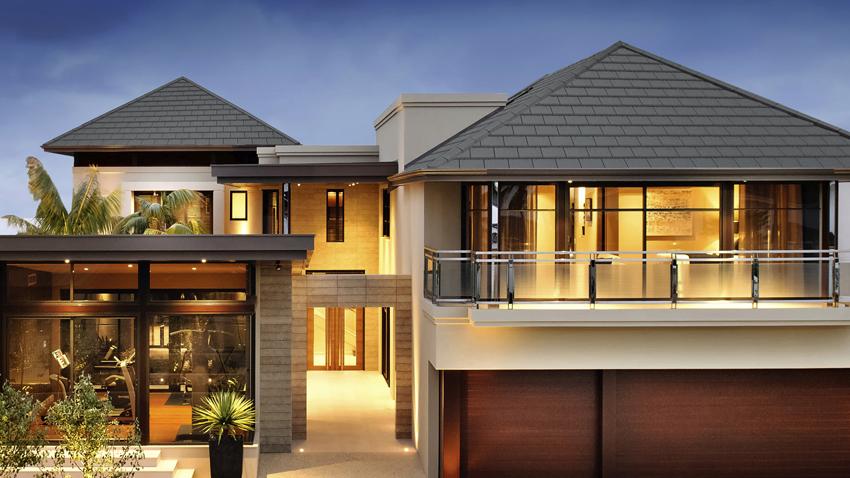When it comes to choosing the perfect roofing material for your Australian home, it’s important to consider the unique climate conditions that the country experiences. From scorching heat to intense storms, your roof needs to withstand a range of challenges to provide the protection your home needs. In this blog post, we will discuss the factors to consider when matching your roofing material to Australia’s climate conditions, as well as the benefits and maintenance requirements of different roofing materials.
Australia’s Diverse Climate
Australia is known for its diverse climate, with different regions experiencing varying weather conditions. From the hot and dry outback to the tropical north and the cooler climates in the south, it’s important to choose a roofing material that can withstand the challenges of your specific location.
Considerations for Australian Climate
When selecting a roofing material, it’s important to consider factors such as durability, energy efficiency, aesthetics, and cost. Different materials offer different advantages and disadvantages, so it’s important to weigh these factors against the climate conditions in your area.
- High Temperature Regions: In hot regions, such as the outback, materials that provide thermal insulation are ideal for keeping your home cool. Clay or concrete tiles are excellent options as they have good thermal properties. Metal roofs, including Colorbond, are also suitable for hot climates as they reflect heat effectively.
- Coastal Areas: For homes located near the coast, it’s important to choose materials that are resistant to corrosion caused by salty air. Copper, zinc, and Colorbond roofing materials are excellent choices for coastal areas as they are highly resistant to corrosion.
- Extreme Weather Events: Australia is prone to extreme weather events such as hailstorms and bushfires. Metal roofs, including Colorbond and corrugated metal, are particularly hail-resistant and can protect your home from damage. For bushfire-prone areas, non-combustible materials like metal roofs, slate tiles, and terracotta tiles are recommended.

Factors to Consider When Choosing a Material
- Visual Appeal and Architectural Style: Consider the visual appeal and architectural style of your home when choosing a roofing material. Clay or terracotta tiles are popular for classic and Mediterranean-style homes, while slate tiles offer a luxurious touch. Metal roofs and Colorbond are suitable for modern and sleek designs.
- Durability and Longevity: Consider the lifespan of the roofing material. Clay and concrete tiles, slate tiles, terracotta tiles, and metal roofs, including copper and zinc, are known for their durability and long-lasting qualities.
- Insulation and Energy Efficiency: Choose materials that offer good insulation and energy efficiency. Metal roofs, including Colorbond, are known for their excellent thermal performance, keeping your home cool in summer and warm in winter.
- Ease of Installation and Maintenance: Consider the ease of installation and maintenance requirements of different materials. Asphalt shingles are relatively easy to install and require minimal maintenance. Metal roofs and Colorbond are also low-maintenance options.
Benefits of Different Roofing Materials
Each roofing material offers its own unique set of benefits. Clay and concrete tiles are durable and fire-resistant, while slate tiles offer a luxurious and long-lasting option. Terracotta tiles provide a distinctive aesthetic appeal and energy efficiency. Metal roofs, including copper, zinc, and Colorbond, are known for their durability, versatility, and low maintenance requirements. Asphalt shingles are affordable and easy to install.
Maintenance Requirements for Different Materials
Consider the maintenance requirements of different roofing materials. Clay and concrete tiles may require regular inspection for cracks, while slate tiles may need occasional maintenance to replace broken tiles. Metal roofs generally have low maintenance requirements, as do Colorbond roofs. Regular cleaning and clearing of debris is important to ensure optimal performance and longevity.
Matching your roofing material to Australia’s unique climate conditions is crucial to ensuring the longevity and performance of your roof. By considering factors such as durability, energy efficiency, aesthetics, and maintenance requirements, you can select a roofing material that will protect your home and withstand the challenges of the Australian climate. Whether you choose clay and concrete tiles, slate tiles, terracotta tiles, metal roofs, or Colorbond, making an informed decision will result in a roof that not only looks great but also provides the necessary protection for your home. Consult with a professional roofing contractor to help you choose the best roofing material for your Australian home.






